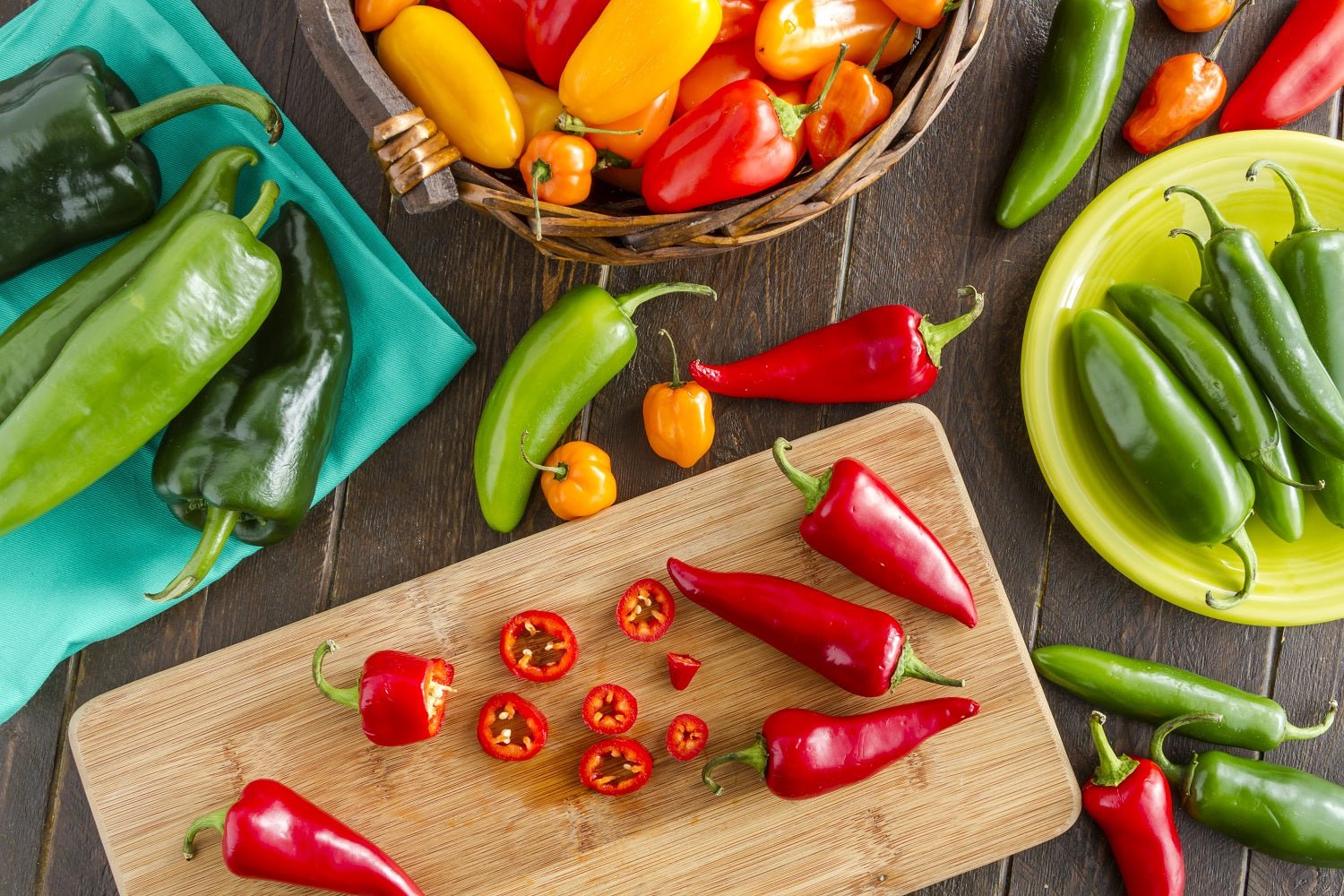
5 Health Benefits of Spicy Foods
Tags:
Some of the greatest philosophers have theorized a link between pain and pleasure. We don’t know much about that, but we do know that spicy foods pack a heavy dose of both. There is something about that kick that tantalizes the taste buds and leaves you craving more.
What you may not realize is that, in addition to adding flavor to your favorite recipes, spicy foods can actually be very beneficial for your health! Keep reading to learn more about spicy foods and the health benefits they offer.
 In addition to giving spicy foods their heat, the chemical compound capsaicin also provides numerous health benefits. Here are a few:
In addition to giving spicy foods their heat, the chemical compound capsaicin also provides numerous health benefits. Here are a few:


How Are Spicy Foods Rated?
Spicy foods are typically made with different varieties of chili peppers, or using spices and sauces derived from peppers. You may be interested to know that there is actually a scale by which the hotness of a chili pepper can be measured – it’s called the Scoville scale, because it was developed in 1912 by Wilbur L. Scoville. Technically speaking, this scale is a measure of the capsaicin content in peppers – that is the active compound that produces the heat sensation and, coincidentally, the compound that is linked to most of the health benefits for which spicy foods are known. Peppers that contain no capsaicin, like sweet bell peppers, rate zero on the Scoville scale. The hottest chili peppers, on the other hand, have ratings of 300,000 or more. For some time, habaneros were considered the hottest chili pepper ranging from 350,000 to 570,000 or higher, but new varieties have begun to tip the scales. As of 2013, Guinness World Records gave the title of “world’s hottest chili pepper” to the Carolina Reaper. A cross between two former record-holders, the ghost pepper and the Red Savina Habanero, the Carolina Reaper rates 2,200,000 on the Scoville scale.What Are the Health Benefits?
 In addition to giving spicy foods their heat, the chemical compound capsaicin also provides numerous health benefits. Here are a few:
In addition to giving spicy foods their heat, the chemical compound capsaicin also provides numerous health benefits. Here are a few:
1. Cancer Prevention
Research conducted by the American Cancer Society suggests that capsaicin may slow the growth of prostate cancer and breast cancer. It has also shown great potential for primary effusion lymphoma and may decrease the size and frequency of certain types of lung tumors.2. Heart Health
Several medical research studies have proven the benefits of capsaicin for reducing blood pressure, lowering cholesterol, and preventing dangerous blood clots. By improving these heart disease risk factors, chili peppers may help protect you against a potential heart attack and other forms of heart disease.3. Weight Loss
Numerous studies have shown that eating capsaicin-rich foods speeds the metabolism, increases fat burn, and suppresses appetite. If you’re trying to lose weight, consider adding more spicy foods to your diet. Capsaicin may also improve physical endurance and athletic performance, helping you get the maximum benefit out of your workout regimen.
4. Diabetes Management
If you have diabetes, including capsaicin-rich foods as a primary component of your diet may help to improve insulin sensitivity and stabilize blood sugar. Pain associated with diabetic neuropathy, a complication of poorly managed diabetes, can also be managed with capsaicin cream.5. Pain Relief
Though eating spicy foods can sometimes be painful, capsaicin is commonly used as a pain-relief agent. Researchers don’t yet understand exactly why this is the case, but it is thought that capsaicin activates TRPV1 receptors, causing the brain to release a specific neurotransmitter that provides analgesic pain relief. Capsaicin creams are often recommended to relieve pain related to rheumatoid arthritis, fibromyalgia, and various forms of joint pain. Not only do chili peppers provide myriad health benefits, but many of them are rich in nutrients as well. Chili peppers are high in carotenoids and other antioxidants as well as vitamin C, vitamin A, B vitamins, iron, magnesium, and calcium.
Where Do You Start?
If you don’t have much of a tolerance for spicy foods, don’t worry! You can slowly build your tolerance by starting out with foods that rate fairly low on the Scoville scale, and work your way up. Try adding pepperoncino to a fresh salad, and begin cooking with Anaheim and Poblano peppers. Que Pasa Mexicana Salsa (available in Mild and Medium) is also a great place to start. Once these peppers no longer make you sweat, start to incorporate jalapenos, working up to spicier options like serrano peppers, cayenne peppers, Thai peppers, and maybe one day even habaneros! The more frequently you enjoy spicy foods, the more you’ll come to appreciate the flavor. And it doesn’t hurt that they offer so many health benefits!Would you like to be the first to hear about our new products and more? Sign up for our Nature’s Path Newsletter.

